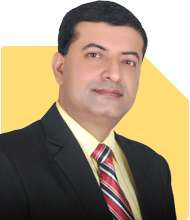B.Tech Mechanical Engineer Needs Help Rebuilding Skills After Gap
Aasif Ahmed Khan | Answer |Ask -Follow
Tech Career Expert - Answered on Aug 09, 2024
Aasif is passionate about guiding students and aspiring engineers as they aim to choose the right educational paths, including courses and colleges.
He holds a bachelor's degree in mechanical engineering from the Indore Institute of Science & Technology in Indore and is currently pursuing a master's degree in thermal and fluid engineering at the Indian Institute of Technology, Mumbai.... more

Hello sir ..i am b.tech mechanical passout in 2019. Due to preparation of government job .gape create now i dont have skills of mechanical engineering but theory portion is also not so good ..what should i do..?
If you’re still interested in government jobs, focus on the specific requirements for those roles. Some government jobs may not require in-depth mechanical engineering skills, alternatively, explore other career paths where your skills and interests align.
1. Attend workshops, conferences, and webinars related to mechanical engineering.
2. Networking can lead to job opportunities and skill development, like LinkedIn & related sites you can develop your networking with companies, conferences & workshops. Improve your communication skills. Being able to explain technical concepts clearly is essential, enhance whatever you learn in theoretical manners.
3. Start by revisiting the core concepts of mechanical engineering. Brush up on topics like thermodynamics, fluid mechanics, and solid mechanics, meanwhile, look for local maker spaces or engineering clubs where you can collaborate on projects and gain practical experience.
Alternatively you can explore online platforms like Coursera, edX, or Udemy for courses related to mechanical engineering. These platforms offer self-paced learning and cover a wide range of topics, after becoming data science & coding experts you can explore new heights of career.
You may like to see similar questions and answers below
Shekhar Kumar | Answer |Ask -Follow
Leadership, HR Expert - Answered on Apr 26, 2024
Chocko Valliappa |539 Answers |Ask -Follow
Tech Entrepreneur, Educationist - Answered on May 09, 2024
Aasif Ahmed Khan | Answer |Ask -Follow
Tech Career Expert - Answered on Jul 22, 2024
Ulhas Joshi |280 Answers |Ask -Follow
Mutual Fund Expert - Answered on Dec 05, 2025
Dr Dipankar Dutta |1835 Answers |Ask -Follow
Tech Careers and Skill Development Expert - Answered on Dec 04, 2025
Ravi Mittal |676 Answers |Ask -Follow
Dating, Relationships Expert - Answered on Dec 04, 2025
Anu Krishna |1745 Answers |Ask -Follow
Relationships Expert, Mind Coach - Answered on Dec 04, 2025
Anu Krishna |1745 Answers |Ask -Follow
Relationships Expert, Mind Coach - Answered on Dec 04, 2025
Mayank Chandel |2562 Answers |Ask -Follow
IIT-JEE, NEET-UG, SAT, CLAT, CA, CS Exam Expert - Answered on Dec 04, 2025
Mayank Chandel |2562 Answers |Ask -Follow
IIT-JEE, NEET-UG, SAT, CLAT, CA, CS Exam Expert - Answered on Dec 04, 2025
Mayank Chandel |2562 Answers |Ask -Follow
IIT-JEE, NEET-UG, SAT, CLAT, CA, CS Exam Expert - Answered on Dec 04, 2025
Mayank Chandel |2562 Answers |Ask -Follow
IIT-JEE, NEET-UG, SAT, CLAT, CA, CS Exam Expert - Answered on Dec 04, 2025
Mayank Chandel |2562 Answers |Ask -Follow
IIT-JEE, NEET-UG, SAT, CLAT, CA, CS Exam Expert - Answered on Dec 04, 2025

























